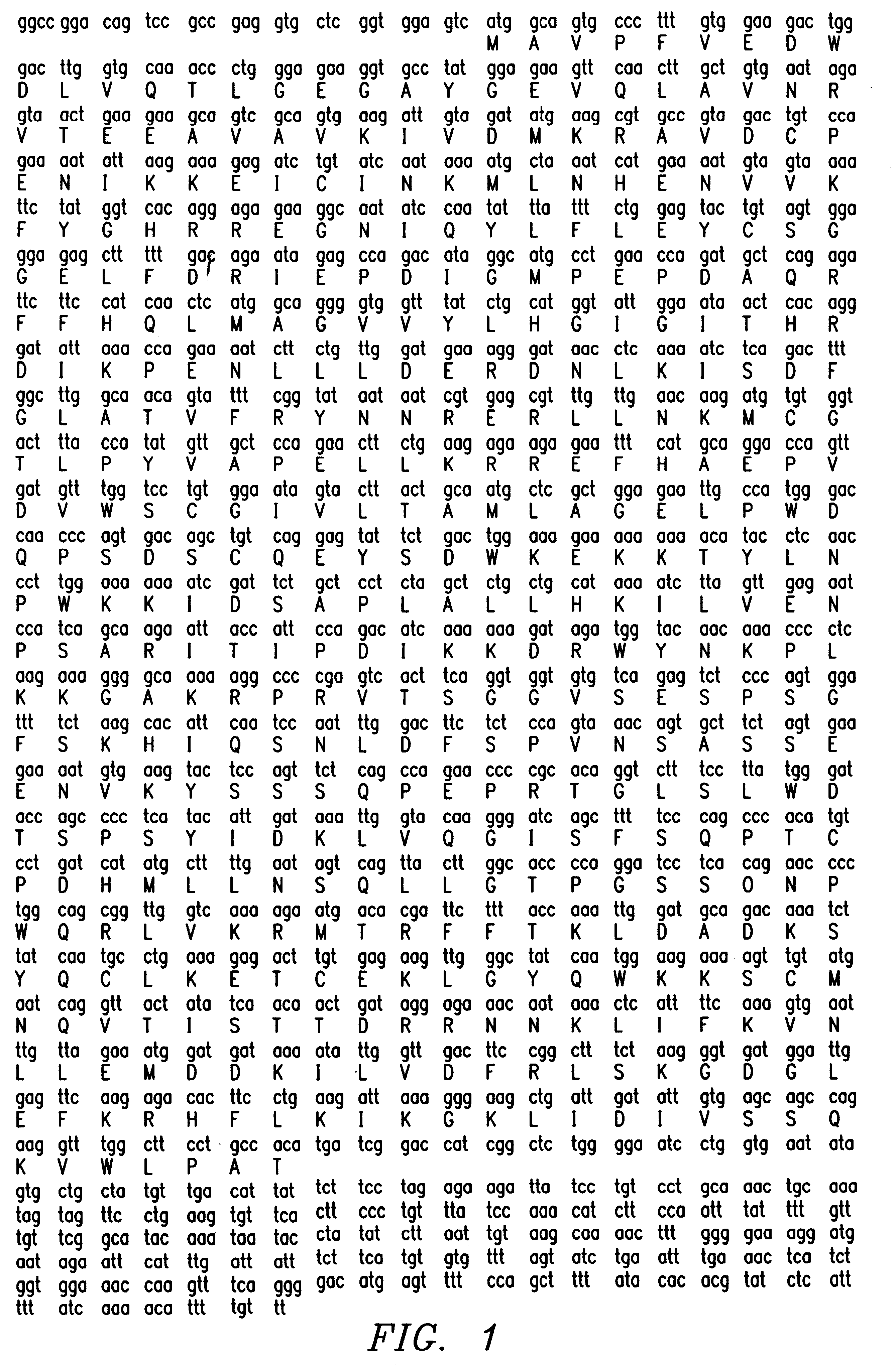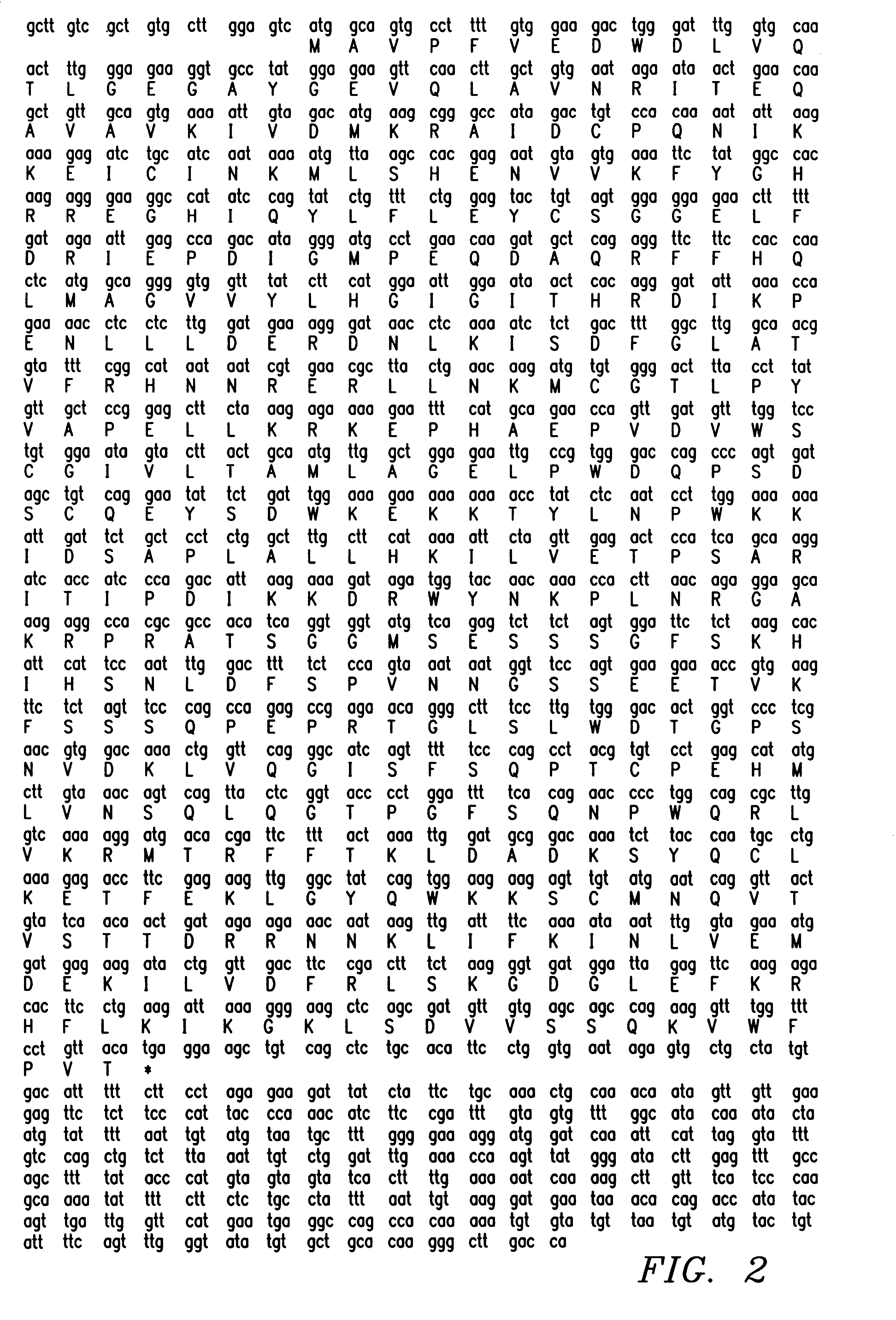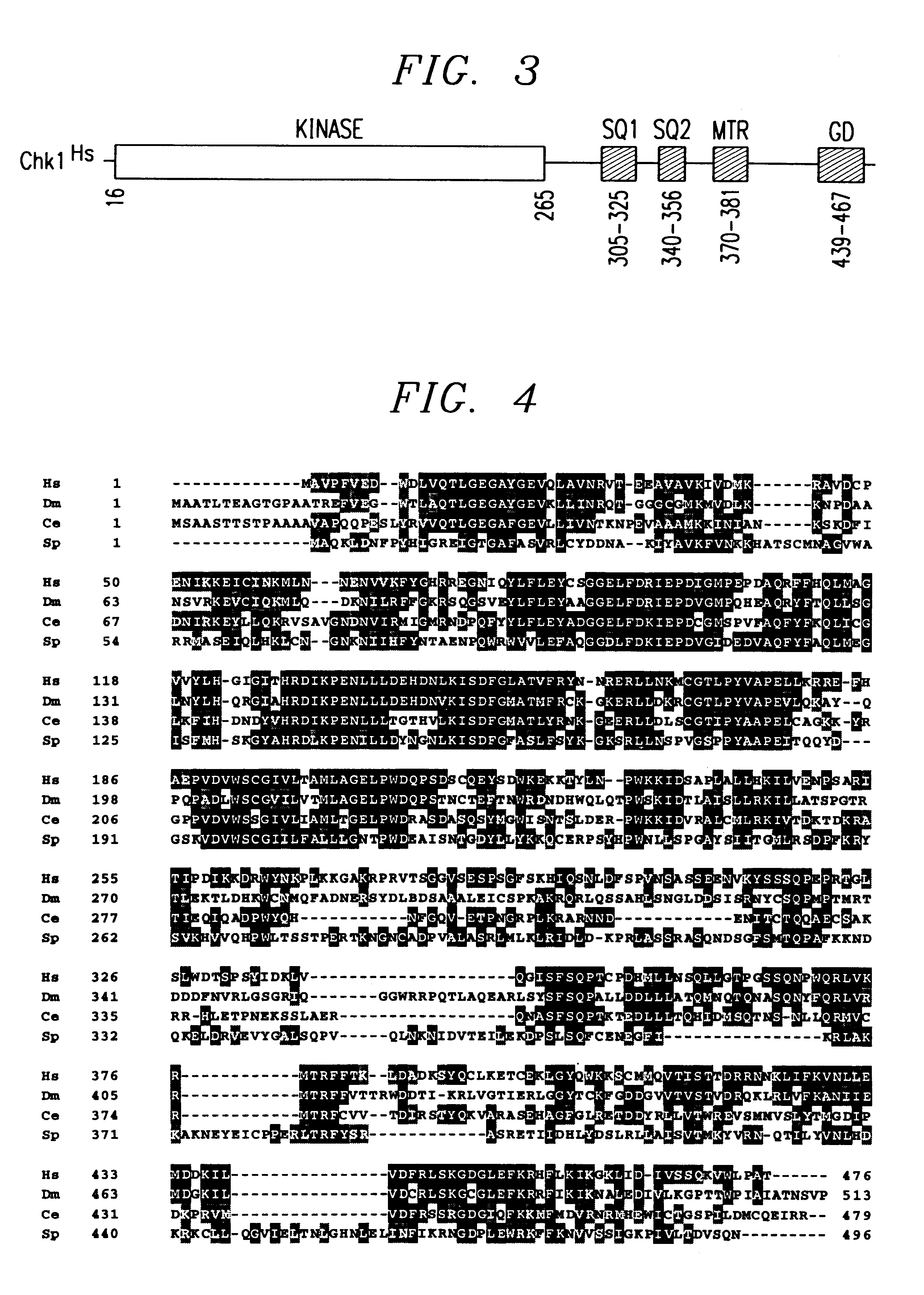Mammalian checkpoint genes and proteins
a checkpoint gene and protein technology, applied in the field of mammalian checkpoint genes and proteins, can solve the problems of uncontrollable cellular proliferation, cancer, and unicellular organisms' reproductive fitness decline, and achieve the effect of increasing phosphorylation
- Summary
- Abstract
- Description
- Claims
- Application Information
AI Technical Summary
Benefits of technology
Problems solved by technology
Method used
Image
Examples
example 1
Human and Murine Chk1
In this Example, human and murine checkpoint genes were identified by searching for homologs of yeast checkpoint genes. In the experiments to identify the human homolog, degenerate PCR primers to conserved motifs in the kinase domains of spChk1 were used to screen a human B cell library by PCR, as known in the art.
A DNA fragment containing the ORF for the hChk1 gene was obtained using the polymerase chain reaction (PCR) as follows. The DNA was obtained from human peripheral blood lymphocytes. Gel-purified degenerate primers used in the reaction were 5'-GGNGGNGAGT / CT / CTNATGGAT / CTT-3' (SEQ ID NO:5) and 5'-TTGGACAGGCCAAAGTC-3' (SEQ ID NO:6). The reaction conditions comprised the following steps: denaturation at 95.degree. C. for 5 minutes, 80.degree. C. for 1 minutes, during which Taq was added, and thirty cycles of 95.degree. C. for 30 seconds; 52.degree. C for 30 seconds; and 72.degree. C. for 2 minutes.
Four of 35 clones showed similarity to spChk1, and one clone...
example 2
Mapping of Chk1 and Its Expression
In this Example, Northern analysis of hChk1 and murine hChk1 was used to identify tissues that express Chk1. In addition, the chromosomal location of Chk1 was mapped to 11q24, by fluorescence in situ hybridization (FISH), as known in the art.
In the in situ hybridization experiments, tissues from adult mice, and murine embryos from day 15.5 post coitum (p.c.) were examined. Embryos or tissues were collected and fixed in 4% paraformaldehyde, embedded in paraffin and sectioned on a microtome (Zeiss) at 5.mu.. Specimens were hybridized with .alpha.-35S-UTP labelled riboprobes essentially as described (O. H. Sudin et al., Develop., 108:47; and B. Lutz et al., Develop., 120:25 [1994]). Briefly, pBluescript-Chk1 was linearized using either BstEI and sense and antisense transcripts were generated using either T7 or T3 polymerase, respectively. Specimens were photographed by double exposure using darkfield illumination with a red filter and Hoechst epifluore...
example 3
Antibodies Against Chk1
In this Example, affinity-purified antibodies to hChk1 protein ("anti-FL") and the 15 amino acids present on the carboxy terminus of the hChk1 protein ("anti-PEP") were produced. In these experiments, hChk1 protein was first produced in baculovirus as described below.
Recombinant baculovirus encoding glutathione S-transferase (GST) fusion proteins to hCHk1 (GST-hChk1) or a to a mutation of hChk1 in which Asp at position 130 was mutated to Ala (GST-hChk1 (D130A) were produced. Recombinant baculovirus encoding GST-hChk1 and GST-hChk1(D130A) (pYS71) were made by introducing an NdeI at the first ATG of the hChk1 open reading frame (ORF) using PCR, and subcloning the hChk1 cDNA as an Nde I-EcoRI fragment into pGEX2Tcs (Invitrogen) to generate pYS45. The XbaI-EcoRI fragment from pYS45 containing GST-hChk1 was then subcloned into pVL1393 (Invitrogen), which was cut with XbaI-EcoRI to generate pYS63.
The GST-hChk1(D130A) mutant was generated by the PCR and the XhoI-XmnI...
PUM
| Property | Measurement | Unit |
|---|---|---|
| pH | aaaaa | aaaaa |
| temperature | aaaaa | aaaaa |
| temperature | aaaaa | aaaaa |
Abstract
Description
Claims
Application Information
 Login to View More
Login to View More - R&D
- Intellectual Property
- Life Sciences
- Materials
- Tech Scout
- Unparalleled Data Quality
- Higher Quality Content
- 60% Fewer Hallucinations
Browse by: Latest US Patents, China's latest patents, Technical Efficacy Thesaurus, Application Domain, Technology Topic, Popular Technical Reports.
© 2025 PatSnap. All rights reserved.Legal|Privacy policy|Modern Slavery Act Transparency Statement|Sitemap|About US| Contact US: help@patsnap.com



